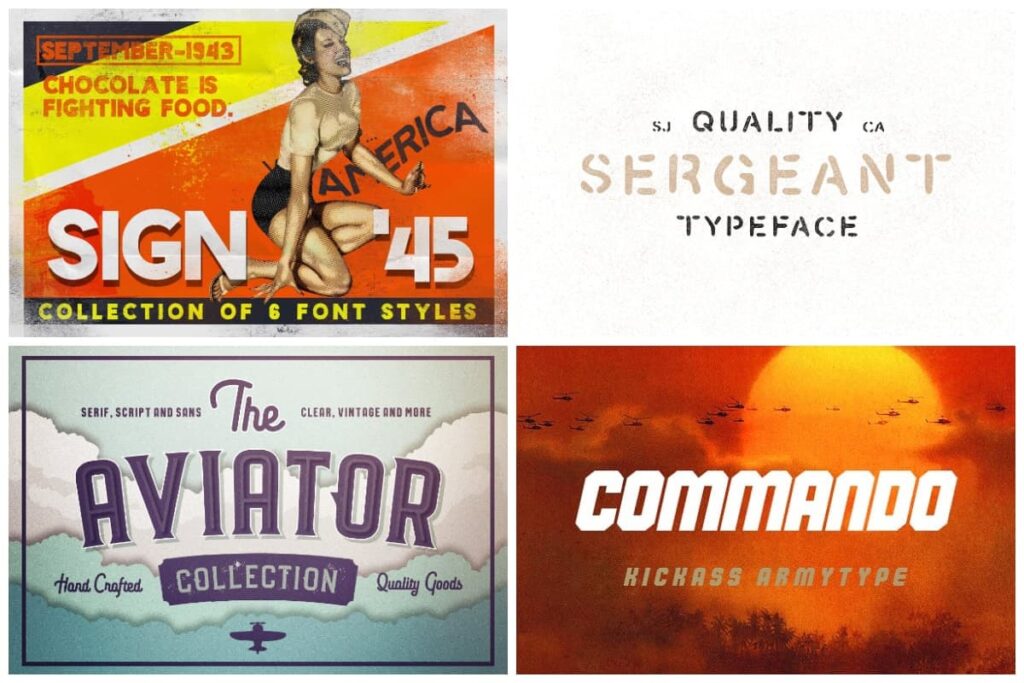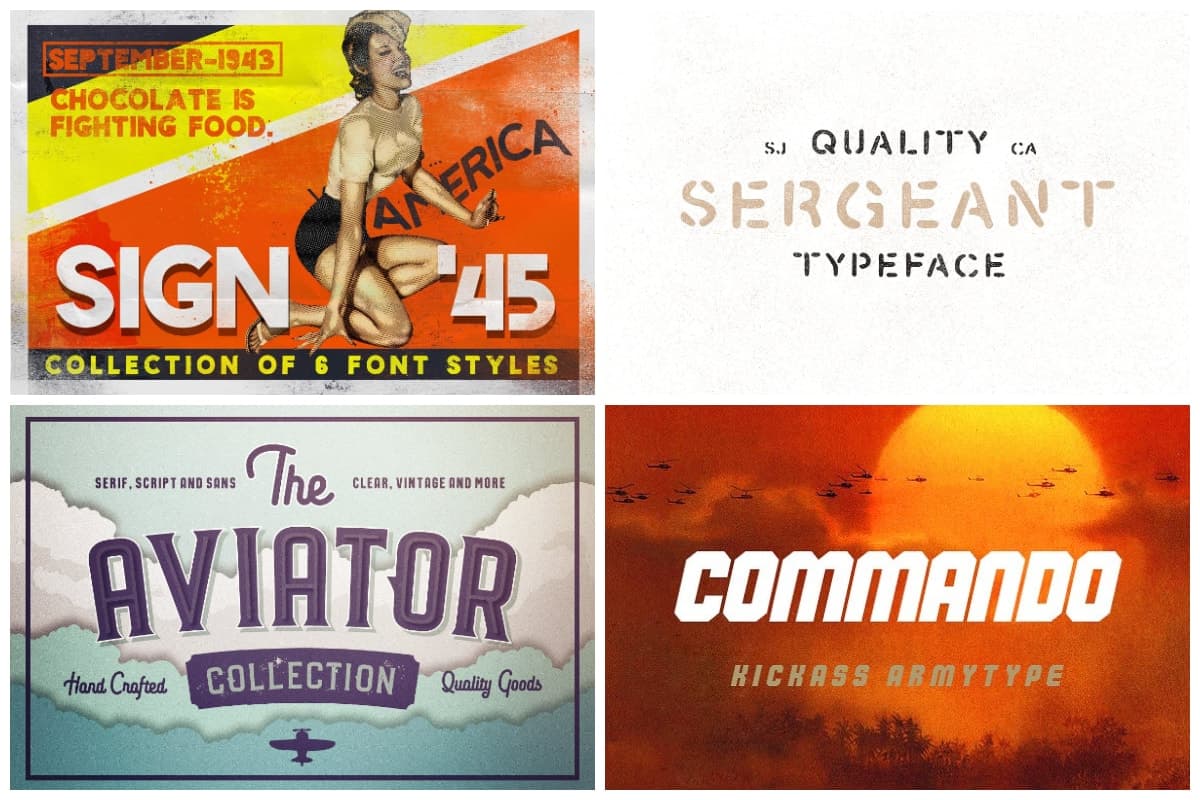
Decoding History: The Enduring Fascination with German World War 2 Fonts
The visual landscape of World War II is deeply imprinted in our collective memory. Beyond the iconic images of battlefields and political leaders, typography played a crucial role in disseminating propaganda, official documentation, and shaping public opinion. Among these, the German World War 2 fonts stand out, evoking a specific era and ideology. Understanding the history, usage, and cultural impact of these fonts provides a valuable insight into the communication strategies of the time. This article delves into the world of German World War 2 fonts, exploring their origins, characteristics, and the ethical considerations surrounding their use today.
The Rise of Fraktur and Other German Fonts
Before and during World War II, Germany predominantly used Fraktur, a blackletter typeface characterized by its ornate and angular letterforms. Fraktur was considered a distinctly German script, deeply intertwined with national identity. Other gothic typefaces like Schwabacher were also prevalent. These fonts were not merely aesthetic choices; they were seen as embodiments of German culture and heritage.
The association of Fraktur with German nationalism predates the Nazi regime. However, the Nazis initially embraced Fraktur, viewing it as the authentic German script. It was used extensively in official documents, newspapers, and propaganda posters. The bold and imposing nature of Fraktur lent itself well to the authoritative tone of the Nazi regime.
The Shift Away from Fraktur
Surprisingly, the Nazi regime later abandoned Fraktur in 1941. The official reason given was that Fraktur was of Jewish origin, based on a misinterpretation of its historical development. In reality, the shift was likely motivated by the regime’s increasing international ambitions. Antiqua, a Roman typeface, was deemed more suitable for communication with countries outside the German-speaking world. This decision marked a significant turning point in the history of German World War 2 fonts.
Key Characteristics of German World War 2 Fonts
German World War 2 fonts, particularly Fraktur, are easily recognizable due to their distinctive features:
- Ornate Letterforms: The intricate and elaborate shapes of the letters.
- Angular Strokes: Sharp angles and pointed serifs.
- High Contrast: Significant difference between thick and thin strokes.
- Dense Appearance: The closely spaced letters create a dark and heavy visual effect.
These characteristics contributed to the fonts’ imposing and authoritative appearance, making them effective for conveying messages of power and dominance. Other German World War 2 fonts, while not as distinct as Fraktur, shared similar characteristics, contributing to the overall visual identity of the era.
Examples of German World War 2 Fonts
Several fonts were widely used during the World War II era in Germany. Here are a few notable examples:
- Fraktur: The quintessential German World War 2 font, used extensively in official documents and propaganda.
- Schwabacher: Another gothic typeface, similar to Fraktur but with slightly rounder forms.
- Gotisch: A general term for gothic typefaces, encompassing various styles.
- Antiqua: The Roman typeface that eventually replaced Fraktur as the official font of the Nazi regime.
Examining these fonts reveals the evolution of typographic styles during the war and the changing priorities of the Nazi regime. The initial embrace of Fraktur and its subsequent abandonment offer a fascinating glimpse into the complexities of Nazi ideology and propaganda.
The Ethical Considerations of Using German World War 2 Fonts Today
The use of German World War 2 fonts today is fraught with ethical considerations. Due to their strong association with the Nazi regime, these fonts can evoke feelings of discomfort, offense, or even hatred. It’s crucial to consider the context in which these fonts are used and the potential impact on the audience.
Using German World War 2 fonts in a historical context, such as in documentaries or museum exhibits, may be acceptable if done responsibly and with appropriate disclaimers. However, using these fonts for commercial purposes or in a way that glorifies or trivializes the Nazi regime is highly problematic. The intent behind the use of these fonts is paramount.
Responsible Use and Historical Context
If you choose to use German World War 2 fonts, it’s essential to provide clear historical context and avoid any suggestion of endorsement or approval of Nazi ideology. Consider the following guidelines:
- Provide Context: Explain the historical significance of the font and its association with the Nazi regime.
- Avoid Glorification: Do not use the font in a way that glorifies or trivializes the Nazi regime or its actions.
- Consider the Audience: Be mindful of the potential impact on the audience and avoid causing unnecessary offense.
- Use Sparingly: Use the font sparingly and only when it serves a clear purpose.
Ultimately, the decision of whether or not to use German World War 2 fonts is a personal one. However, it’s crucial to approach this decision with sensitivity, awareness, and a deep understanding of the historical context.
Finding and Identifying German World War 2 Fonts
Identifying and finding authentic German World War 2 fonts can be a challenging task. Many of the original fonts are not readily available in digital formats. However, numerous digital fonts are inspired by or replicate the styles of Fraktur and other gothic typefaces used during the war.
Several online resources offer collections of historical fonts or fonts inspired by historical styles. These resources can be valuable for designers, historians, and researchers interested in studying or using German World War 2 fonts. However, it’s crucial to verify the authenticity and historical accuracy of these fonts before using them.
Resources for Font Identification
Here are some resources that can help you identify and find German World War 2 fonts:
- Online Font Databases: Websites like MyFonts and FontShop offer a wide selection of fonts, including gothic and blackletter typefaces.
- Historical Archives: Libraries and historical archives may contain original examples of German World War 2 fonts.
- Font Identification Tools: Online tools like WhatTheFont can help you identify fonts based on images.
Using these resources can help you gain a deeper understanding of the typography of the World War II era and find fonts that accurately reflect the styles of the time.
The Enduring Legacy of German World War 2 Fonts
Despite their controversial associations, German World War 2 fonts continue to fascinate and intrigue designers, historians, and researchers. These fonts serve as a powerful reminder of the visual landscape of the war and the role that typography played in shaping public opinion and disseminating propaganda. Understanding the history, usage, and ethical considerations surrounding these fonts is essential for interpreting the visual culture of the 20th century.
The legacy of German World War 2 fonts extends beyond their historical context. These fonts continue to influence contemporary design and art, serving as a source of inspiration for artists and designers interested in exploring themes of history, identity, and power. However, it’s crucial to approach the use of these fonts with sensitivity and awareness, recognizing their complex and often problematic associations. [See also: History of Typography] and [See also: Propaganda Techniques of World War 2]
In conclusion, the study of German World War 2 fonts offers a valuable window into the visual culture of the World War II era. By understanding the origins, characteristics, and ethical considerations surrounding these fonts, we can gain a deeper appreciation of the power of typography and its role in shaping our understanding of history.
